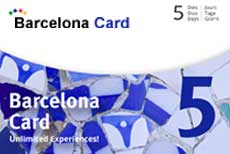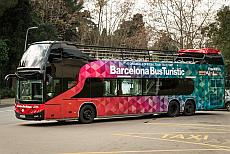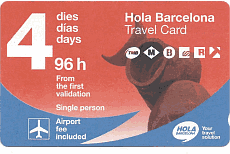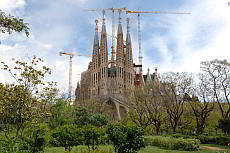Museu del Disseny - Design Museum Barcelona
History of design and everyday objects, in advertising and in fashion
The design museum, which opened in 2014, houses 70,000 objects from five centuries, giving visitors a wide-ranging overview of the history of design in Catalonia and Spain. The collection comes from smaller museums of decorative arts, ceramics, textiles, fashion and graphics.
The Museu del Disseny de Barcelona is situated at the Plaça de les Glòries in the district of Poble Nou in the north-east of Barcelona. It was opened in 2014 and was the result of a merger of different existing museums for applied art, such as the Museum of Ceramics, the Textile Museum and the Museum of Graphic Design.
The striking building at the edge of the Plaça de les Glòries is right next to the Torre Agbar which can be seen from afar. This was the beginning of the redesign of a formerly cheerless traffic junction in Barcelona. The ambitious project was designed and executed by the renowned architect’s office MBM from Barcelona, namely the architects Josep Martorell and Oriol Bohigas, David Mackay, Oriol Capdevila and Francesc Gual. Work began in 2009 and the building was already finished in 2013.
Interesting extras in the Design Museum
- Free admission with the Barcelona Card
In addition to the museum, the original building also houses two further institutions: the Institute for the Promotion of Design “FAD” and the Centre for Design Barcelona “BCD”. In a similar way to the Raval district with the MACBA, the Museum of Contemporary Art, the intention was to enhance a formerly neglected district of the city by incorporating an important cultural institution. The building of the Museu del Disseny forms the western corner of the urban development program “@22 Barcelona” in which, among other things, the former industrial plant is to be converted into modern urban areas.
The exhibits at the Design Museum tell the story of Spanish and particularly Catalan designs. The main focus is on the individual objects and their designers. The permanent exhibition is roughly divided into four parts which are presented over the different levels of the building.
The top floor of the four-storey building displays the department of Graphic Design with exhibition pieces particularly from the field of poster advertising. These come mainly from the graphics museum in Barcelona. The designs show the development of Spanish and Catalan graphic design since the beginning of the twentieth century.
The third floor is dedicated to the topic of fashion design. In the 19th century Catalonia was a European centre of fabric production, which is why the fashion department of the Design Museum is especially extensive and worth seeing.
The pieces in this part of the Design Museum originate mainly from the former textile museum. The exhibition is arranged chronologically and begins with original pieces from the Renaissance. The focus is particularly on Spanish designers such as Cristóbal Balenciaga and Paco Rabanne, who are represented by many original designs from the last 60 years. The discourse follows the question as to how corsets, cushioning or cutting techniques form the human body. It asks the question as to why, in some eras, clothing was intended to make the body larger and slimmer in others.
On the second floor there are exhibits from the field of decorative arts. These include ceramics, materials, glass art, furniture, clocks and much more. The pieces on display come from smaller museums such as the Museum of Ceramics or the Carriage Museum of Barcelona. This forms a tour through the history of decorative art from the 3rd to the 20th century.
The exhibition on the first floor is concerned with the topic of product design. Everyday objects from different decades, which particularly stand out through their special design or are representative of a period in terms of design and materials, are shown here, as well as prototypes of certain products. Again, the special focus here is on the history of product design in Catalonia.
Since Catalan design has always been renowned all over the world and has often been, and still is pioneering, you will discover many objects and items here in the museum which will feel familiar.
In addition to the permanent exhibition, changing special exhibitions are also shown at the Museu del Disseny.
Tickets for the Design Museum
- Barcelona Card: free admission to the museum
Important information
Surroundings
Find Hotels nearby
Address
Pl. de les Glòries Catalanes, 37-38
www.museudeldisseny.cat
Arrival
Metro: L1 (Glòries), Tram T4, T5, T6 (Glòries)
Parking nearby
Opening times
Tuesdays to Sundays: 10:00 - 20:00
Closed on Modays, except on holidays
Closed: 1 January, 1 May, 24 June, 25 December
Book your accommodation in Barcelona here! All categories.
1-5*-hotel rooms, apartments, hostels.








